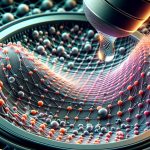When you think about high-performance fabrics, you might not immediately consider the intricate engineering behind them. Yet, the process of transforming raw fibers into textiles with ideal properties like tensile strength, elasticity, and thermal regulation is nothing short of meticulous. You'll find that advanced techniques such as weaving and knitting, combined with cutting-edge materials like nanotechnology, play a vital role. This blend of science and innovation pushes the boundaries of what fabrics can do, making them indispensable in sectors from athletic wear to medical applications. But how exactly do these engineered fabrics meet such diverse and demanding needs?
Table of Contents
Key Takeaways
- Blending fibers optimizes durability, elasticity, and moisture-wicking properties for enhanced performance in various conditions.
- Advanced weaving and knitting techniques improve fabric strength, flexibility, and aesthetic appeal.
- Nanotechnology in fabrics provides wear resistance, water repellency, and UV protection.
- Smart fabrics integrate technology for temperature regulation, health monitoring, and adaptive fit.
- Sustainable textiles employ eco-friendly materials, recycled fibers, and biodegradable polymers for environmental sustainability.
The Science of Fabric Engineering
Fabric engineering explores the intricate processes that transform raw fibers into high-performance textiles. You'll dive deep into the science behind creating durable fabrics by understanding the interplay between fabric structure and material composition. This knowledge equips you with the tools to optimize fabric performance, achieving the perfect balance between strength, flexibility, and longevity.
By focusing on fabric structure, you're examining the weave, knit, or bonding methods that give textiles their unique characteristics. Each method impacts the fabric's durability and its ability to perform under various conditions. For instance, a tightly woven fabric may offer excellent abrasion resistance, while a knit fabric may provide superior stretch and comfort. Understanding these structural nuances is essential for designing textiles that meet specific performance criteria.
Material composition is another critical factor. Selecting the right fibers—whether natural, synthetic, or blended—directly affects the fabric's capabilities. Synthetic fibers like polyester and nylon often offer enhanced durability and moisture-wicking properties, making them ideal for high-performance applications. By mastering the art of blending different fibers, you can create textiles that excel in both durability and performance optimization, tailored to meet the demands of any given application.
Key Properties of High-Performance Fabrics
To achieve peak performance in textiles, you need to focus on key properties such as tensile strength, elasticity, moisture-wicking ability, and thermal regulation.
To start with, tensile strength guarantees fabric durability, allowing the material to withstand significant stress and strain without tearing. This characteristic is essential for high-performance applications where resilience is non-negotiable.
Elasticity is another cornerstone. It allows the fabric to stretch and return to its original shape, ensuring comfort and maintaining the structural integrity during intense activities. Elastic materials are fundamental for performance optimization, providing both support and flexibility.
Moisture-wicking properties are pivotal for keeping the wearer dry and comfortable. Fabrics with high moisture-wicking ability pull sweat away from the skin and disperse it across the surface, promoting quick evaporation. This enhances breathability, preventing overheating and maintaining optimal body temperature.
Lastly, thermal regulation is crucial in high-performance fabrics. It ensures that the fabric can adapt to various environmental conditions, keeping you warm in cold settings and cool in hot environments.
Advanced Materials in Fabrication
When you explore advanced materials in fabrication, you'll encounter groundbreaking uses of nanotechnology in textiles.
These innovations include fabrics that can change color, monitor health, or even generate energy.
Smart fabrics are revolutionizing how you experience clothing and materials in everyday life.
Nanotechnology in Textiles
Nanotechnology's integration into textiles is revolutionizing fabric performance by enhancing durability, flexibility, and functionality. By applying nano coating, you greatly enhance textile improvement, making fabrics more resistant to wear and tear. This advanced method coats fibers with nanoparticles, imparting them with impressive properties like water repellency, stain resistance, and even UV protection.
Imagine a shirt that repels coffee stains or a jacket that resists rain without compromising breathability. These aren't just futuristic dreams; they're reality thanks to nanotechnology. With nano coating, textiles become not only more durable but also more versatile, adapting to various environmental conditions and demanding applications.
You can also marvel at the increased flexibility that comes with these innovations. Nanotechnology allows for the creation of fabrics that retain their softness and comfort while offering enhanced strength and longevity. Furthermore, these textiles can incorporate unique functionalities such as antimicrobial properties, which are essential in medical and athletic applications.
Smart Fabric Innovations
Building on the advancements brought by nanotechnology, smart fabric innovations are taking textile performance to the next level with the integration of advanced materials in fabrication. Imagine garments that not only fit perfectly but also monitor your health metrics and adjust to environmental conditions. Wearable tech is no longer confined to gadgets; it's seamlessly woven into the fabric of your everyday attire, merging functionality with fashion integration.
You're not just looking at fabrics anymore; you're exploring a new domain where textiles can sense, react, and adapt. Think of clothing that can regulate your body temperature, change color, or even charge your devices. These innovations aren't only cutting-edge but also align with environmental sustainability goals. Advanced materials in smart fabrics often incorporate biodegradable elements, reducing waste and promoting fabric innovation that's kinder to our planet.
For those seeking mastery in textile technology, understanding these smart fabric innovations is essential. You're not merely riding a wave of technological advancements; you're at the forefront of a movement transforming how we interact with our clothes.
In this dynamic landscape, smart fabrics represent the pinnacle of progress, blending sophistication, sustainability, and superior performance.
Technology in Fabric Development
You'll find that technology's role in fabric development is essential for achieving superior performance.
Advanced weaving techniques and smart fabrics integration are at the forefront of this evolution.
Let's explore how these innovations transform everyday textiles into high-performing materials.
Advanced Weaving Techniques
Advanced weaving techniques have revolutionized fabric development by incorporating intricate patterns and innovative materials to enhance performance. You're no stranger to the demand for textiles that deliver both functionality and aesthetics. By mastering innovative patterns and sustainable weaving methods, you can create fabrics that don't just look good but also perform exceptionally well. These techniques enable the creation of complex, durable, and environmentally friendly textiles that meet the highest standards of performance.
Imagine weaving high tech structures into your fabrics, resulting in performance textiles that adapt to various needs. Whether it's for sportswear, medical applications, or industrial uses, these advanced techniques allow you to manipulate fibers at the micro-level. This precise control over the weaving process enhances the fabric's strength, flexibility, and breathability, providing you with a competitive edge.
To achieve this, you'll need to stay updated on the latest advancements in weaving technology. Innovations such as 3D weaving, automated looms, and computer-aided design (CAD) systems are just the beginning. By integrating these technologies into your practice, you can produce fabrics that aren't only high-performing but also sustainable, pushing the boundaries of what's possible in textile engineering.
Smart Fabrics Integration
Smart fabrics are revolutionizing the textile industry by integrating technology directly into the fabric to enhance functionality and user experience. These innovations are crucial in wearable technology and sustainable fashion, pushing the boundaries of what your garments can achieve.
Imagine fabrics that not only look great but also offer performance enhancement and comfort optimization.
Incorporating smart fabrics into your wardrobe means you'll benefit from cutting-edge advancements such as:
- Temperature regulation: Fabrics can adjust to your body temperature, keeping you comfortable in various climates.
- Health monitoring: Embedded sensors can track essential signs, providing real-time health data.
- Enhanced durability: Smart fabrics often include materials that are more resistant to wear and tear.
- Adaptive fit: Some fabrics can change their structure to provide a better fit as you move.
- Energy efficiency: Certain smart fabrics can even generate and store energy, perfect for charging your devices on the go.
Applications in Athletic Wear
Athletic wear benefits immensely from engineered fabrics that enhance performance, comfort, and durability. When you're pushing your limits, sweat wicking technology makes a world of difference. These fabrics draw moisture away from your skin, allowing for quicker evaporation and keeping you dry. Coupled with fabric breathability, your body stays cooler, even during the most intense workouts. You won't just feel more comfortable; you'll also perform at your peak.
Compression benefits are another game-changer. Engineered fabrics provide targeted support to muscle groups, reducing fatigue and improving circulation. This not only enhances your performance but also aids in quicker recovery post-exercise. Moisture management in these fabrics is critical, ensuring that even as you sweat, the material remains lightweight and non-restrictive.
Medical Uses of Engineered Fabrics
Engineered textiles have transformed medical treatments by providing innovative solutions for wound care, surgical procedures, and patient recovery. When you explore the medical uses of these advanced materials, you'll find applications that greatly enhance patient outcomes and clinician efficiency.
Consider the impact of surgical implants and wound dressings. These engineered fabrics are designed to promote healing while preventing infection, offering a sterile environment essential for recovery.
Compression garments are another important application, providing necessary support and improving blood circulation for patients with various conditions.
Medical professionals also benefit from medical scrubs made from engineered fabrics. These scrubs aren't only comfortable but also functional, featuring antimicrobial properties to maintain a hygienic work environment.
Here's a quick look at how these fabrics are used in medical settings:
- Surgical implants: Biocompatible fabrics that seamlessly integrate with body tissues.
- Wound dressings: Advanced materials that speed up healing and reduce infection risk.
- Compression garments: Essential for post-surgical recovery and managing chronic conditions.
- Medical scrubs: Durable, antimicrobial scrubs that uphold a sterile environment.
- Patient recovery aids: Fabrics designed to enhance comfort and support during recovery.
Future Trends in Fabric Engineering
In the coming years, you'll witness groundbreaking advancements in fabric engineering that promise to revolutionize various industries. The focus on sustainable textiles will drive the creation of eco-friendly materials, ensuring that the environmental footprint of fabric production is greatly reduced.
You'll see innovative designs that incorporate recycled fibers, biodegradable polymers, and even fabrics that can self-repair, providing extended usability and reduced waste.
High tech performance will be at the forefront of these advancements. Imagine fabrics that adapt to changing environmental conditions, offering excellent comfort and functionality regardless of the weather. These materials could regulate temperature, wick away moisture, and even harness energy from movement, making them indispensable in both everyday wear and specialized applications like athletic gear and military uniforms.
Eco-friendly materials won't only meet but exceed the performance standards of traditional fabrics. You'll encounter textiles that are stronger, lighter, and more versatile, crafted with precision to cater to the specific needs of diverse sectors.
From fashion to aerospace, these innovations will set new benchmarks, offering unparalleled durability and efficiency. By embracing these future trends, you'll be at the cutting edge of fabric engineering, driving both sustainability and high tech performance forward.
Frequently Asked Questions
How Do Engineered Fabrics Impact Environmental Sustainability?
You'll see engineered fabrics greatly impact environmental sustainability by boosting energy efficiency and waste reduction. They're produced through eco-friendly manufacturing processes, contributing to a circular economy and reducing the overall ecological footprint.
Are Engineered Fabrics More Expensive Than Traditional Fabrics?
Ever wondered if engineered fabrics cost more than traditional ones? In cost comparison, engineered fabrics can be pricier initially, but their production efficiency often offsets the cost, offering long-term savings and superior performance for discerning users like yourself.
Can Engineered Fabrics Be Recycled or Repurposed?
Yes, you can recycle engineered fabrics. Various recycling options exist, depending on the material's composition. Additionally, there are many repurposing techniques, allowing you to transform these fabrics into new, functional items efficiently.
What Industries Benefit Most From Engineered Fabrics?
Imagine a fabric as a superhero's cape—industries like medical textiles, automotive textiles, sports apparel, and protective gear benefit most. You'll find these engineered fabrics enhancing performance, safety, and comfort in each of these vital areas.
How Do Engineered Fabrics Compare in Durability to Natural Fabrics?
Engineered fabrics often outshine natural fabrics in durability. They withstand wear and tear better, offering longer life spans. However, their environmental impact can be higher, so weigh durability comparison against sustainability when choosing materials.
- How Many Yards Are in a Standard Bolt of Kona Cotton Fabric? - June 20, 2025
- A Look at Kimura’s Fabric Store in Kona, Hawaii - June 20, 2025
- The Difference Between Kona Cotton and Standard Quilting Cotton - June 20, 2025







